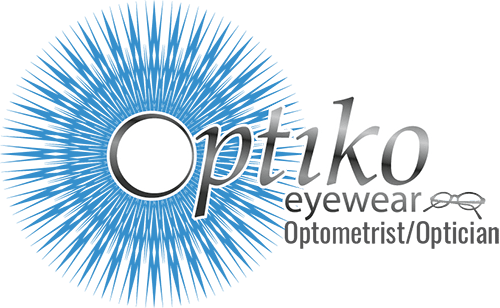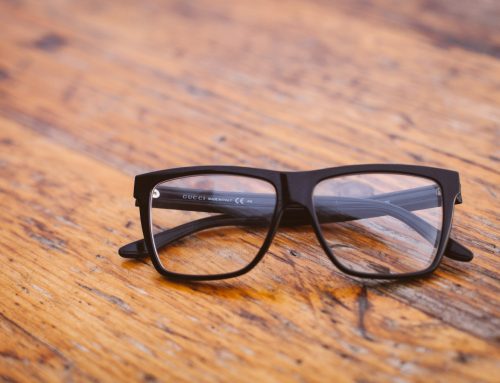As we age, it’s natural for our eyesight to change, often resulting in the need for multifocal lenses to achieve clear vision at different distances. Navigating the world of multifocal lenses can be a daunting task, especially with the wide array of options available.
Optiko, one of Calgary’s leading optical care providers, is dedicated to guiding you through this process, providing essential information about the different types of multifocal lenses and how to choose the best pair that caters to your unique vision needs.
In this guide to multifocal lenses, we will shed light on the science behind these innovative eyewear technologies, as well as delve into the most common types of multifocal lenses available, including bifocals, trifocals, and progressive lenses. Furthermore, we will explore the benefits of wearing multifocal lenses, tips on adjusting to your new eyewear, and key considerations when selecting the ideal pair for your lifestyle and visual needs.
The Science Behind Multifocal Lenses
Multifocal lenses are specifically designed to provide clear vision at various distances by incorporating different lens powers into one lens. Whether you’re reading a book up close, working on a computer screen at an intermediate distance, or driving and viewing far-off objects, multifocal lenses can tackle divergent visual tasks seamlessly.
This innovation in eyewear technology has immensely improved the lives of many individuals experiencing presbyopia, which is the age-related inability to focus on close objects.
Types of Multifocal Lenses
The world of multifocal lenses comprises several options, each catering to different vision needs and preferences. Let’s explore some common types of multifocal lenses:
1. Bifocal Lenses:
These lenses consist of two distinct areas with different powers – one for near vision and the other for distance vision. A visible line separates the two zones, and wearers merely need to shift their gaze up or down to change focus.
2. Trifocal Lenses:
Similar to bifocal lenses, trifocal lenses have an additional segment for intermediate vision, such as when using a computer. These lenses boast three distinct zones – near, intermediate, and distance – with visible lines separating the different segments.
3. Progressive Lenses:
Also known as no-line multifocals, progressive lenses offer a smooth transition between different focal lengths without visible lines. They provide a more natural viewing experience by eliminating the abrupt jumps in focus experienced in bifocal and trifocal lenses.
Benefits of Wearing Multifocal Lenses
Now that we’re acquainted with the different types of multifocal lenses, let’s delve into the compelling reasons to consider these advanced eyewear technologies:
- Convenience: Multifocal lenses eliminate the need for multiple pairs of glasses catering to different distances. A single pair of multifocals caters to multiple visual tasks, providing freedom from constantly changing or juggling between different eyewear.
- Seamless Transition: Progressive lenses, in particular, offer a smooth and continuous transition between different visual zones, providing a more natural and comfortable viewing experience.
- Enhanced Safety: By allowing wearers to view objects at varying distances without changing glasses, multifocal lenses can improve safety, especially while driving or navigating stairs and other potentially hazardous environments.
- Aesthetics: Progressive lenses, with their invisible and seamless design, maintain an aesthetic appeal for those who prefer the appearance of a single-vision lens without visible bifocal or trifocal lines.
Choosing the Perfect Pair: Tips and Key Considerations
Selecting the perfect pair of multifocal lenses tailored to your individual needs and lifestyle requires thoughtful deliberation. Keep these key considerations in mind when venturing into the world of multifocal lenses:
- Understand Your Visual Needs: Evaluate your daily visual tasks, determine which distances you need help with, and choose the type of multifocal lens that caters to those specific needs.
- Expert Guidance: Consult with an eye care professional for a comprehensive eye exam, accurate prescription, and personalized recommendations on the ideal multifocal lens type for your unique vision requirements.
- Quality Matters: Opt for reputable brands that use high-quality materials and advanced lens technologies. Premium quality lenses can provide clearer vision, better peripheral vision, and minimal distortion.
- Trial and Adjustment: It may take some time for your eyes to adjust to your new multifocal lenses, especially if you’re a first-time user. Be patient, follow your eye care professional’s guidance, and don’t hesitate to seek assistance if the adjustment period extends beyond a few weeks.
Embrace Multifocal Lenses for an Enhanced Visual Experience
Equipped with a comprehensive understanding of multifocal lenses, their benefits, and how to choose the right pair, you are now well-positioned to embark on your journey toward improved vision and eye health. By identifying your unique visual needs, seeking expert guidance from Optiko, and making informed decisions on your lens options, you can look forward to a more convenient and comfortable everyday experience.
At Optiko, we are committed to supporting you throughout your eye health journey, offering expert advice, valuable resources, and personalized care tailored to your needs. If you believe multifocal lenses could be the ideal solution for your vision requirements, consult our knowledgeable team to explore the best options and make a confident decision for your overall well-being and lifestyle.








